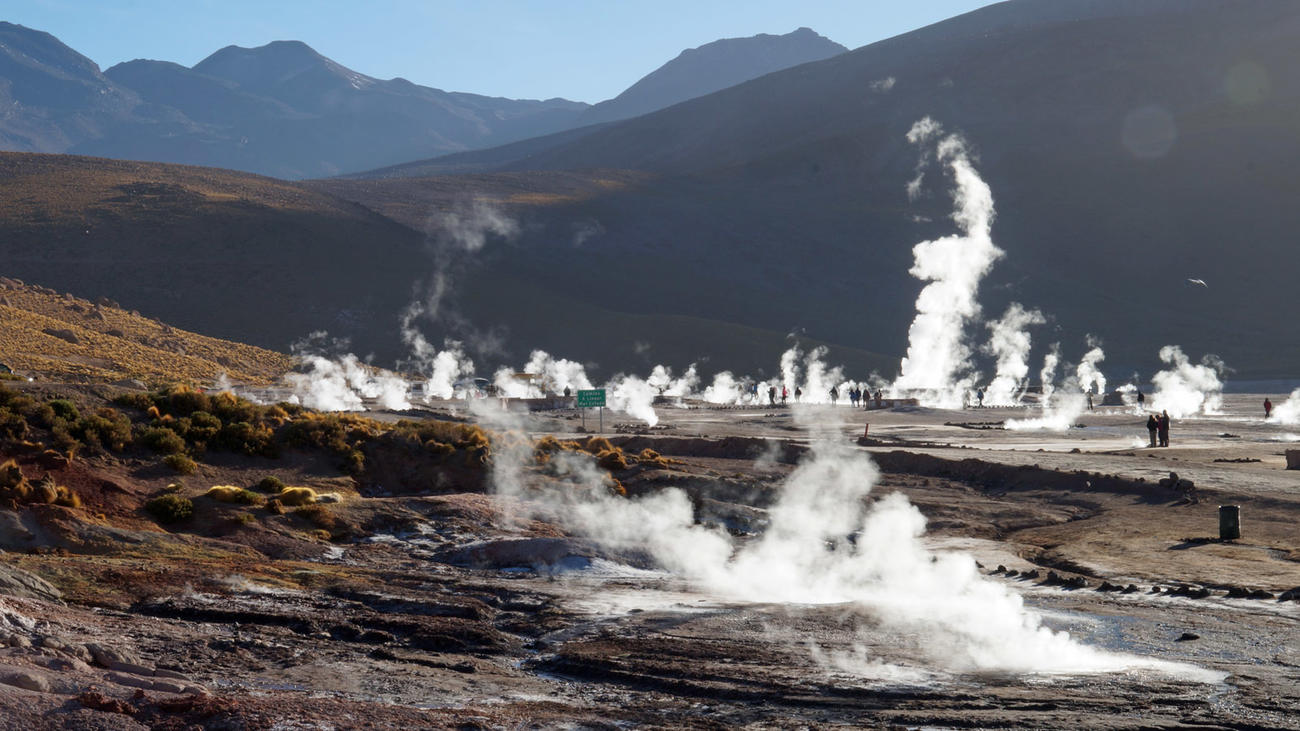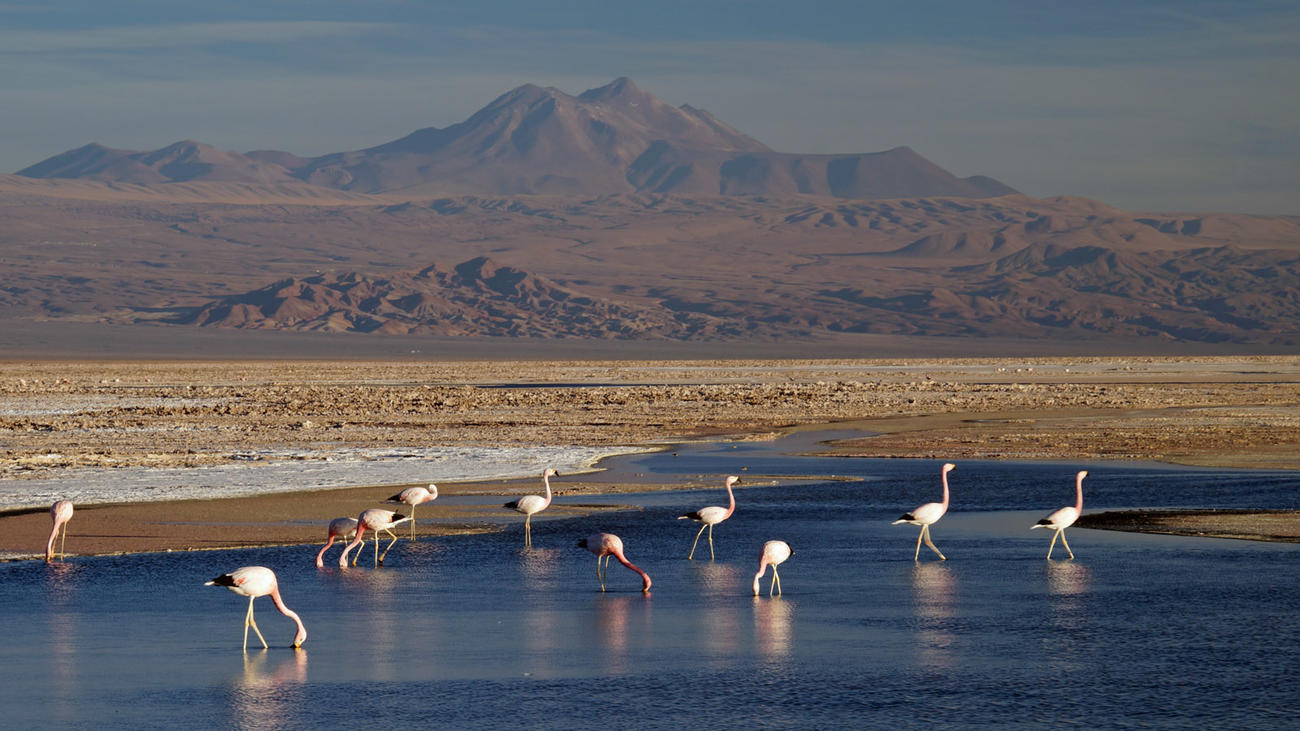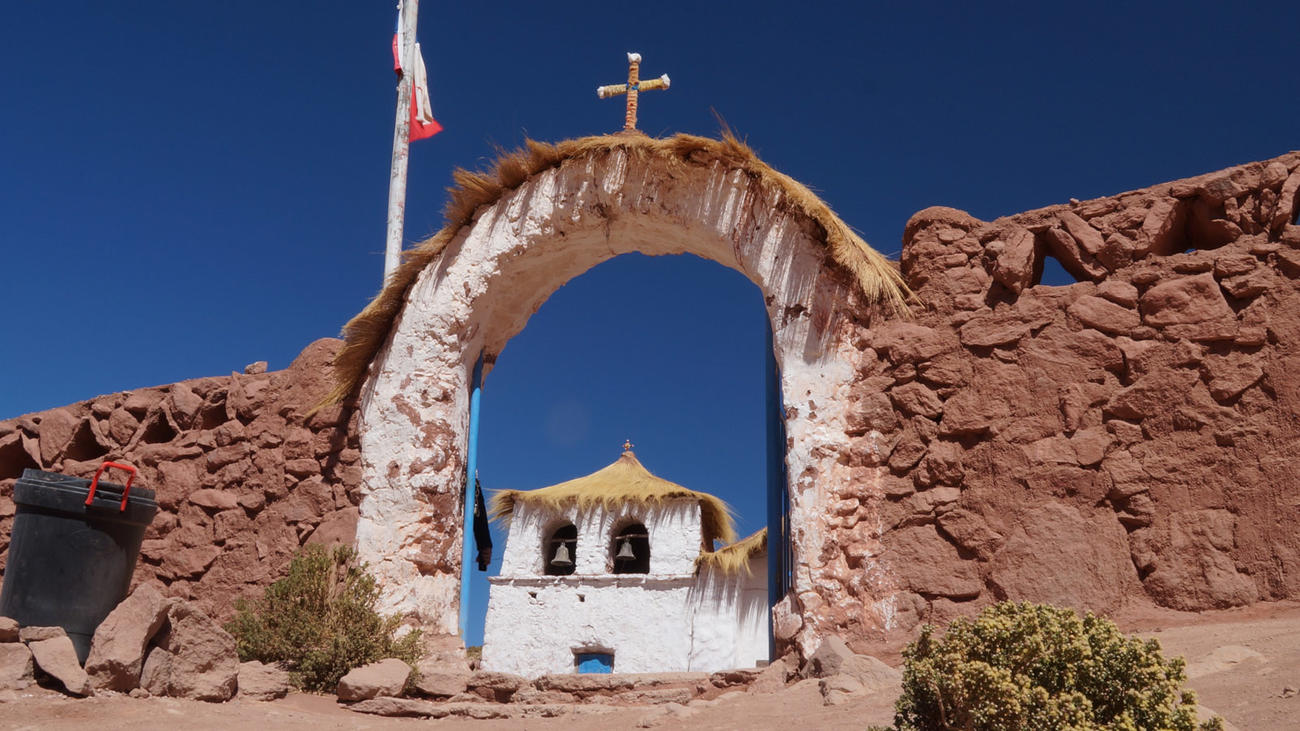Sitting in the rain shadow of both the Andes and the Chilean Coastal Range, the Atacama Desert is renowned as being the driest place on earth. It is also the region that has been driest for longest, with some suggesting a continuous arid area here dates back at least three million years. Some weather stations in Atacama have never had any rain, the only moisture they receive being a marine fog that manages to make its way inland from the sea. Some of the soil has no life at all, a situation NASA has exploited to test instruments for missions to Mars. In addition, due to its otherworldly landscapes, it has been used as a location on numerous space films including 'Space Odyssey: Voyage to the Planets'.
So, it’s dry. What is possibly less well known is that it is also stunningly beautiful; harsh to be sure, but also incredibly dramatic and moving.

Forming the northern chain of Chile’s ‘Ring of Fire’, the region around the small, one-horse town of San Pedro de Atacama is framed by a spectacular girdle of volcanoes, the largest and most impressive being Licancabur (grandfather of the people) which stands just under 6000 metres high. In all there are over 90 volcanoes in this area, four of which are still active and smoke most of the time. And within this fortress of fire lies a plethora of fascinating geological phenomenon: salt flats, geyser fields, high altitude desert steppes, or altiplanos as they are locally known, and picturesque canyons. Often sculptured into extraordinary shapes by the region's dramatic wind and radical temperature swings, the canyons are made up of many different minerals and colours, making them among the most unique and impressive landscapes you are ever likely to witness. Indeed, if an artist were to paint the region accurately, you’d think he’d been on acid.

I have been here for two nights and have been on the go most of the time. I’ve visited the Valley of the Moon, Death Valley, the Salt Canyon, the Salt Range (the perfect place for sunset shots), the impressive rock art site, the salt flats to see the pink flamingos and the high altitude geyser field. I’ve been lucky enough to stay in two great hotels (and see the view of the volcano from one of them) and have eaten well. Tonight I am going to do a stargazing trip – the Atacama is known as the best place in the world from which to see space – and then tomorrow move on, overland, from Chile to Bolivia.

Everyone in the office says Bolivia is their favourite country in South America. Let’s see… its going to have to go some way to improve on Chile.
